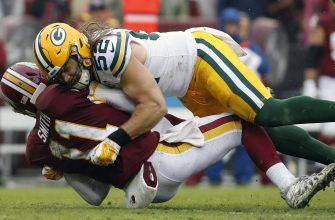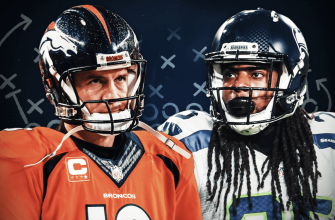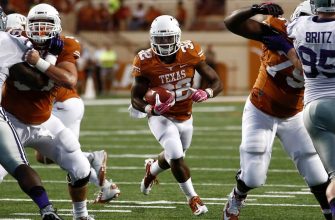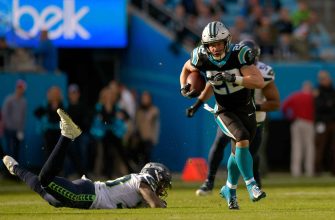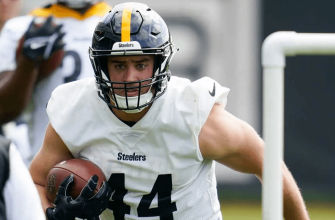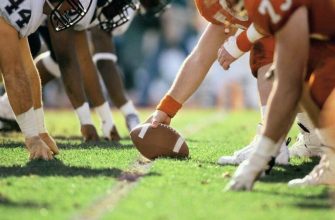A split end is a player position in American football that lines up on the line of scrimmage. The split end is positioned on the outside shoulder of the offensive line and is often referred to as the “X receiver.” Their key role is to be a deep threat and stretch the field vertically to create openings for underneath routes.
The split end typically lines up several yards outside of the tight end or where the tight end would normally line up. This “split” alignment is how the position gets its name. It allows the split end to get a free release off the line of scrimmage without getting jammed by defenders. From this alignment, the split end will usually run deep routes down the sideline or over the middle. Their goal is to beat the cornerback in single coverage and provide a big play threat.
Split ends are among the fastest players on the team and ideally have both straight line speed to beat defenders deep as well as agility and route running skills. They tend to be taller and leaner than other receivers to help win jump balls downfield. Overall, the split end acts as a field stretcher, opening up space for other receivers and the running game by forcing safeties to respect their ability to make plays over the top.
Alignment on the Field
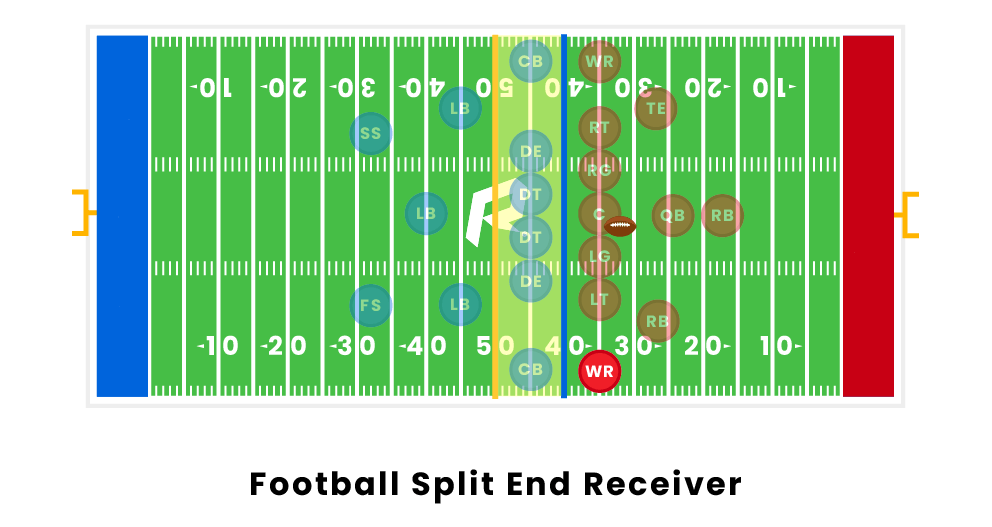
The split end lines up on the line of scrimmage, typically lined up just outside of the tight end or where the tackle would be. The split end is positioned “split” away from the rest of the offensive formation, hence the name. This wider alignment allows the split end to get a free release off the line of scrimmage without getting jammed by a defender.
The exact alignment of the split end can vary based on the play call and offensive scheme. Most commonly they will line up 5-10 yards outside of the tackle box, giving them space to release downfield as a vertical threat on passing plays. Some teams have their split end line up wider, sometimes nearly outside the numbers, while more run-oriented teams may have them closer to the tackle. Regardless of the exact alignment, the defining characteristic is the split end being positioned further from the core of the formation than other receivers.
Route Running
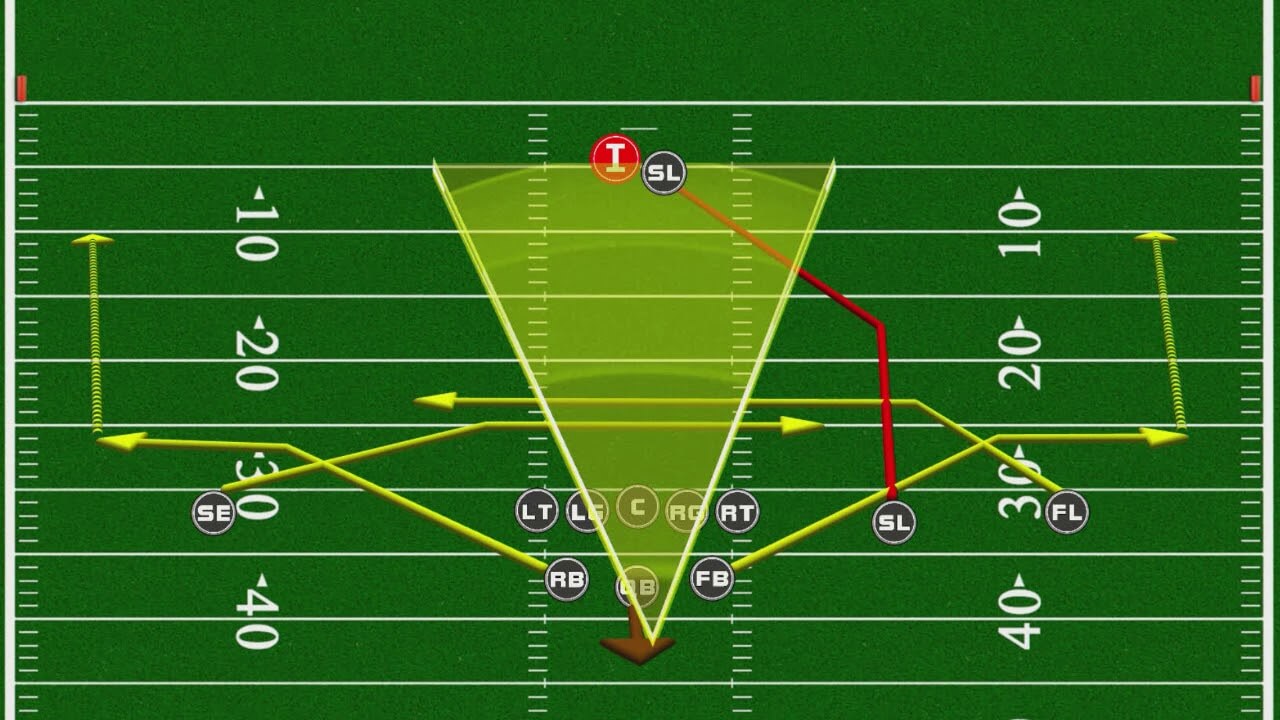
Split ends are typically speedy, agile receivers that excel at stretching the field vertically up the sidelines and blowing past defensive backs. Their most common routes are designed to do just that through raw speed and precise route running technique:
- Go routes – The receiver simply sprints straight down the field as fast as possible. The quarterback lofts a deep pass to hit him in stride. Split ends like Randy Moss made a living on catching long bombs on go routes.
- Post routes – The receiver starts by faking a short in route, then plants his outside foot and wheels around to sprint straight downfield on a post pattern. This is another deep route split ends use their speed on.
- Corner routes – On this route, the split end feigns running straight upfield before planting his outside foot and breaking sharply towards the sideline corner at a 45 degree angle. This route requires pinpoint timing with the quarterback to hit the receiver right as he makes his break.
- Comeback routes – Here the split end runs 10-15 yards downfield before making a quick, hard 90 degree cut back towards the line of scrimmage. The receiver relies on his agility and acceleration out of his break to create separation.
To get open on these routes, split ends leverage their explosive speed and acceleration to blow by defenders off the line. They also need the footwork and agility to sell their fakes and make decisive, sharp cuts at full speed on their route breaks. Mastering these route running techniques is crucial to their success.
Blocking Responsibilities
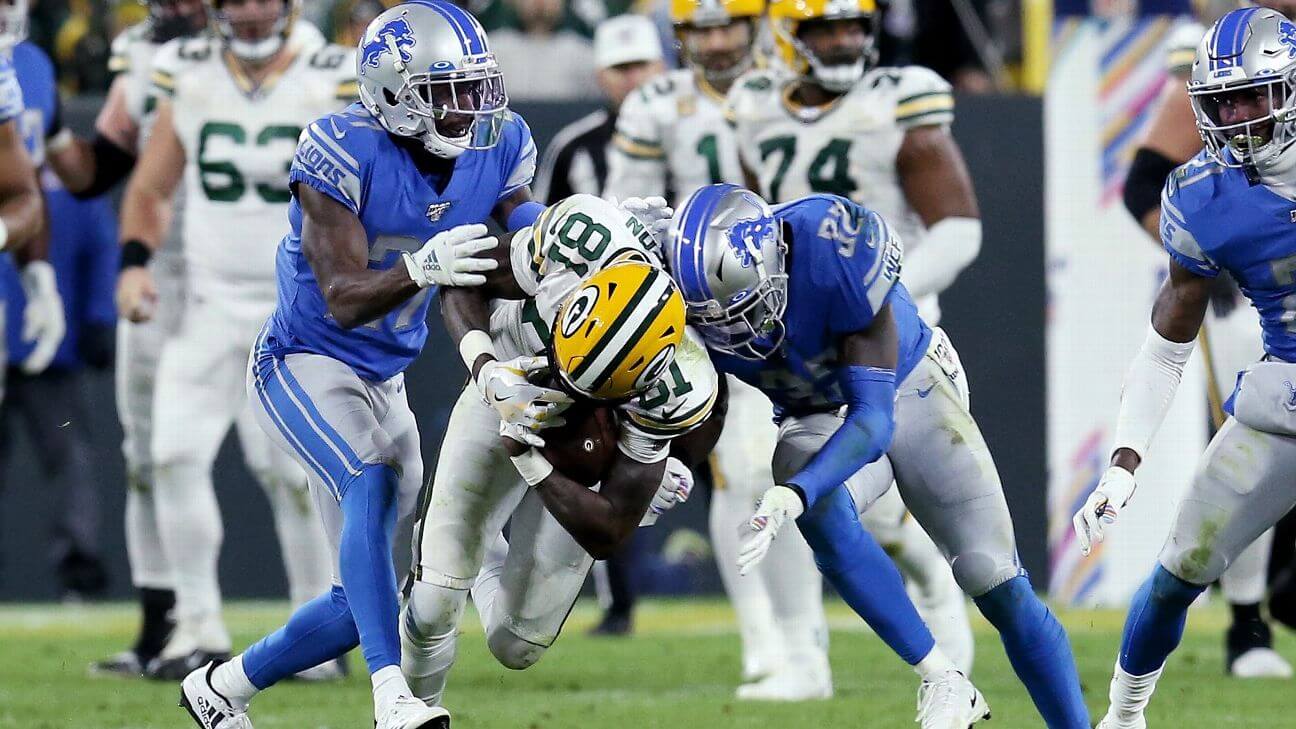
The split end plays an important role in blocking for the running game. While the tight end and offensive line are often tasked with handling defensive ends and linebackers at the line of scrimmage, the split end is responsible for blocking defensive backs downfield.
On running plays, the split end will engage with cornerbacks, safeties, and nickelbacks to help spring the running back for extra yards. This often requires them to block much bigger defenders in open space. Split ends must use proper blocking techniques like squaring up the defender, driving with the legs, and maintaining leverage to avoid being shed or missing blocks.
Since the split end is often isolated on the weak side away from the play, they have to maintain backside containment and prevent overpursuit by secondary defenders. This requires excellent recognition skills to diagnose plays and locate their blocking assignment downfield. Split ends are also tasked with stalk blocks where they block defenders from the side to prevent them from plugging running lanes.
Overall, while the split end is known mostly as a deep receiving threat, they play a critical role in the running game with their ability to block defensive backs at the second and third level. Their blocking skills are almost as important as their pass catching ability in being a complete split end.
Ideal Physical Attributes
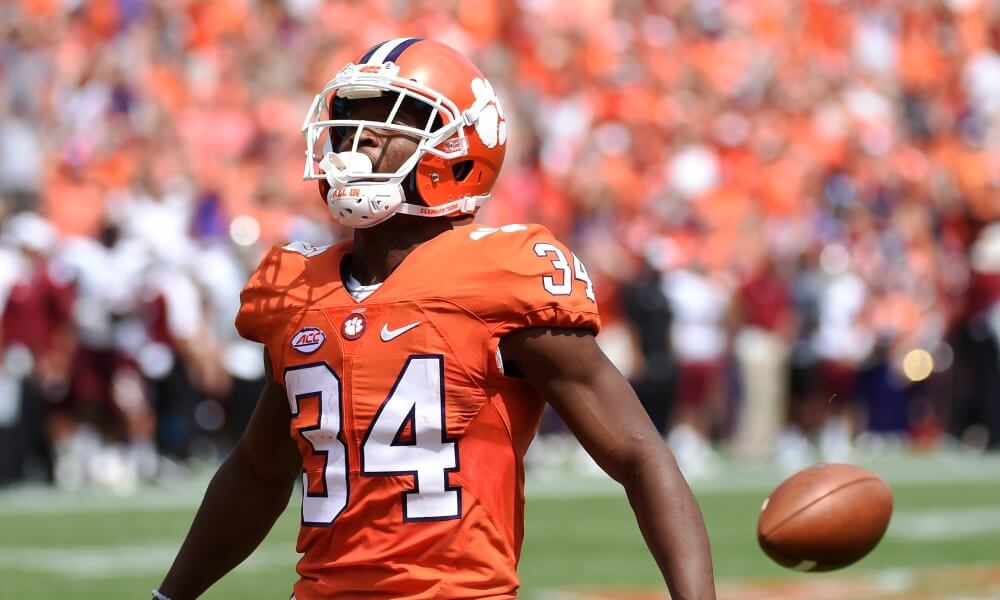
A successful split end requires a rare combination of size, speed, hands, and jumping ability to excel at the position.
Size – Split ends need enough height and weight to endure physical contact with cornerbacks and safeties, while also having the quickness to separate from defenders. The prototypical size is around 6’2” – 6’3” and 200 – 210 lbs. Top split ends are often among the biggest wide receivers on the team.
Speed – Split ends rely on speed to beat defenders off the line and get downfield on deep routes. Having pure straight-line speed helps split ends take the top off the defense. A 40-yard dash time under 4.4 seconds is considered elite. The ability to accelerate and change speeds is also valuable.
Hands – Excellent hand-eye coordination and pass catching ability is a must. Split ends need to reliably haul in passes while running at full speed and with defenders in tight coverage. Large, strong hands help split ends secure catches and maintain control.
Jumping Ability – Being able to high point passes and win contested catches is a huge advantage. A vertical leap of 35+ inches allows split ends to go up and grab jump balls over defenders. Timing leaps and adjusting to passes in the air are critical skills.
The combination of size, speed, hands, and jumping talent allows split ends to thrive as downfield weapons in the passing game. Few players have all of these attributes at an elite level, which is why talented split ends are coveted.
Comparison to Flanker
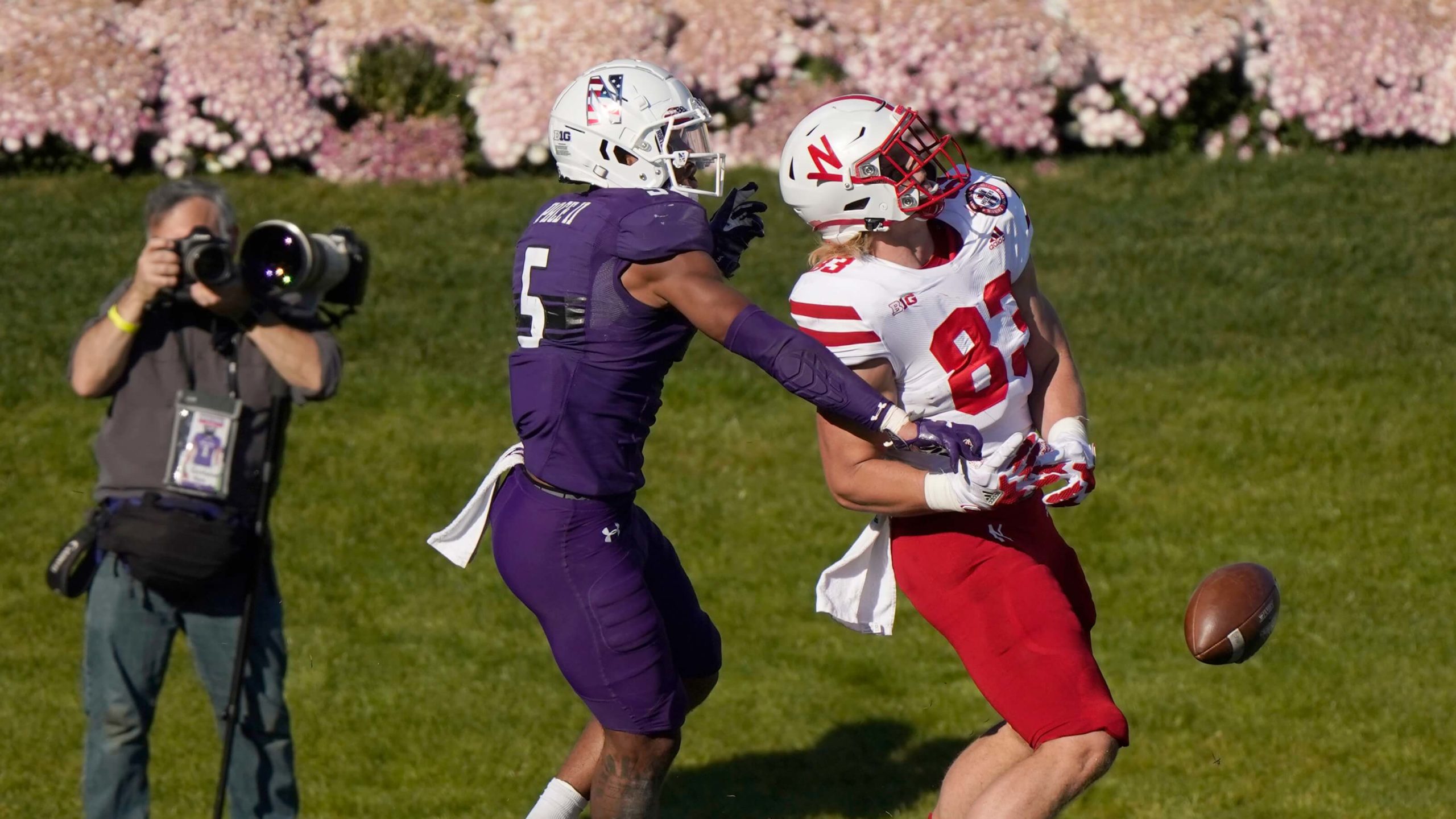
The split end and flanker positions are similar in many ways, as both are typically fast, agile wide receivers that line up on the outside of the offensive formation.
However, there are some key differences between the two roles:
- Alignment: The split end lines up on the weak side of the formation, furthest from the tight end. The flanker lines up on the strong side, closer to the tight end.
- Route running: The split end generally runs more vertical routes, aiming to stretch the field deep with fly and post patterns. The flanker runs more horizontal routes like slants, drags and quick outs.
- Blocking: The split end has less blocking responsibility than the flanker in most plays. However, they may be asked to crack back block on run plays or pass protection.
- Size and speed: Split ends tend to be slightly smaller and faster than flankers. They rely more on straight-line speed to beat defenders deep. Flankers are more physical and can power through arm tackles.
The differences originate from the split end’s weak side alignment. They have more space to accelerate and less traffic to navigate on their routes. The flanker works the strong side, so must deal with the tight end and extra defenders, leading to different route assignments. Both positions require elite athleticism and hands, but the split end’s specialty is purely as a deep threat.
Famous Split Ends
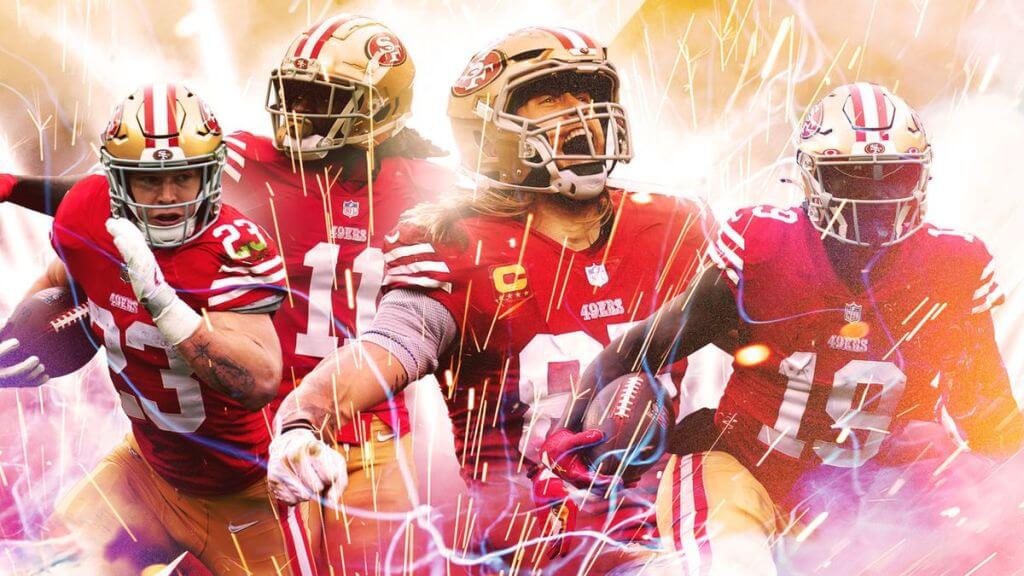
The split end position has been home to some of the most talented wide receivers in NFL history.
Here are a few of the most notable split ends over the years:
- Lynn Swann – A Hall of Famer who played for the 1970s Pittsburgh Steelers dynasty, Swann was renowned for his acrobatic catches and ballet-like footwork along the sideline. His diving and leaping grabs in Super Bowls X, XIII, and XIV are the stuff of legend.
- Paul Warfield – Another Hall of Famer, Warfield was the split end for the Cleveland Browns and Miami Dolphins in the 1960s and 1970s. He was a precise route runner with sure hands and averaged over 20 yards per catch for his career. Warfield won championships with the Browns and Dolphins.
- Steve Largent – The first true superstar split end, Largent played for the Seattle Seahawks from 1976-1989. He held numerous major receiving records when he retired, including most career receiving yards and touchdowns. Largent was inducted into the Hall of Fame in 1995.
- Michael Irvin – A key part of the Dallas Cowboys 1990s dynasty, Irvin was a big, physical split end who was not afraid to go over the middle. He had excellent chemistry with QB Troy Aikman and made clutch catches to help Dallas win three Super Bowls.
- Calvin Johnson – Nicknamed “Megatron,” Johnson used his massive 6’5″ frame and explosive athleticism to put up video game numbers for the Detroit Lions. He routinely made jaw-dropping, leaping catches and was virtually impossible to cover one-on-one. Johnson retired in his prime but is still considered one of the most physically gifted receivers ever.
The split end has showcased the skills of many all-time great pass catchers. Its unique alignment allows elite receivers to showcase their abilities and battle one-on-one with cornerbacks. Many of the game’s best wideouts made their marks lined up on the solitary island that is the split end position.
Drafting Split Ends
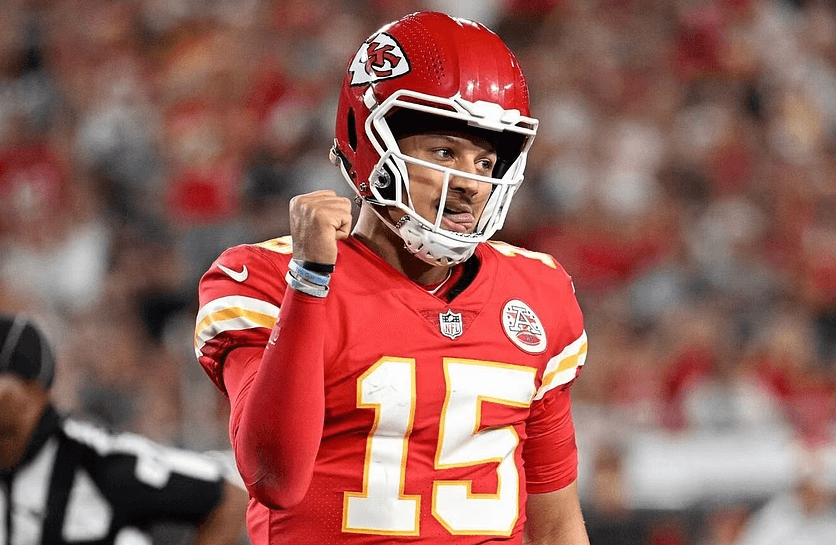
In recent NFL drafts, the split end position has become more valued for teams seeking offensive playmakers. The rise of spread offenses in college football has produced athletic wide receivers comfortable lining up in isolation on the outside as a split end. Many of the top receivers selected in the first two rounds of the draft over the past 5-10 years have the skillset to excel as a split end at the NFL level.
Some recent highly drafted split ends include Ja’Marr Chase, Jaylen Waddle, CeeDee Lamb, Jerry Jeudy, Marquise Brown, N’Keal Harry, Calvin Ridley, Corey Davis, Laquon Treadwell, Amari Cooper, and Kevin White. Teams are willing to use premium picks on elite split end prospects who can stretch the field vertically, create big plays after the catch, and give their offense an explosive weapon.
Certain programs like Alabama, LSU, and Ohio State have produced several top split ends for the NFL draft in recent years by running spread passing attacks featuring isolation routes. Split ends with refined route running coming from these college systems can more easily translate their skills and make an immediate impact in the NFL.
When evaluating split end prospects, NFL talent evaluators focus on speed, acceleration, ball skills, and the ability to consistently win one-on-one matchups on the outside. Ideal size for the position is usually in the 6’0 to 6’3 range with enough bulk and strength to defeat press coverage. But speed and athleticism trump size concerns if a player has the talent to dominate as an outside receiver.
Overall, as college concepts continue influencing NFL schemes, athletic split ends who can stress defenses vertically and after the catch will remain premium draft targets early in the draft. Their big play ability adds a valuable dimension to an offense.
Salary and Contracts

Split ends are some of the highest paid non-quarterback offensive positions in the NFL. Their ability to make big plays downfield makes them a valuable commodity that teams are willing to invest in.
Here are some key points about split end salaries and contracts:
- The average salary for a top split end is around $14-15 million per year. This has risen in recent years as the importance of elite receivers has increased.
- Some of the highest paid split ends make over $20 million per year on long-term deals. For example, DeAndre Hopkins of the Arizona Cardinals makes $27.3 million annually on his 5 year contract.
- Rookie contracts for first round draft picks at split end are lucrative. A high first round pick can expect a 4 year deal worth around $20 million with a fifth year team option. However, they won’t hit the massive veteran contracts until their second deal when they prove themselves.
- Guaranteed money is a big negotiation point for split ends on their second and third contracts. Top players want over 50% of the total value locked in as guarantees given the injury risk.
- The franchise tag is commonly used on star split ends. This allows teams to retain the player on a 1 year deal based on the top 5 average salaries at the position. In 2022, the receiver franchise tag was $18.4 million.
- Holdouts sometimes occur when a proven split end is unhappy with their current deal. This leverage forces teams to offer a new improved contract rather than losing the player.
Overall, the split end position clearly commands premium salaries in the league due to the value elite receivers provide in today’s pass first league. Top split ends earn over $20 million per year and demand contract guarantees at the highest level.
Future Outlook
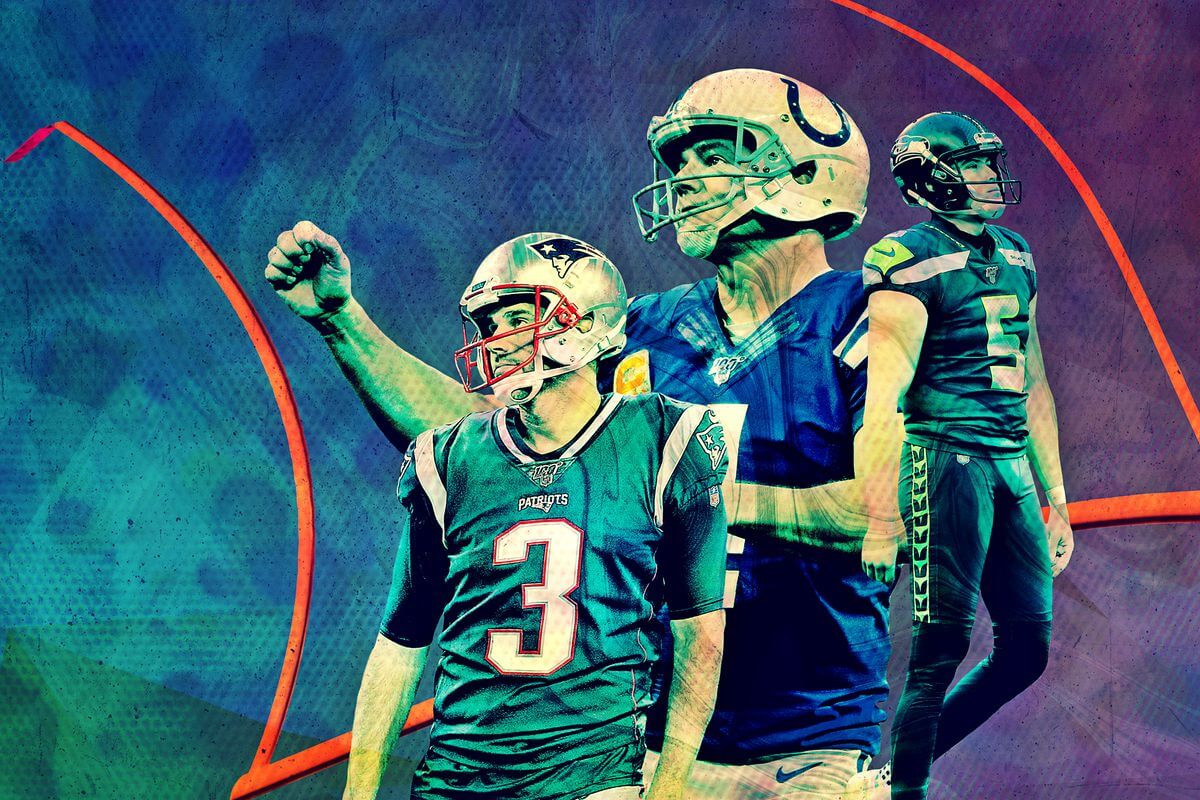
The future of the split end position will likely see continued evolution as offenses become more complex and creative. Here are some projections for how the position could change:
Projected Use and Evolution of the Position
- Increased use of spread and air raid offenses could lead to more 4+ receiver sets, allowing split ends more opportunities to exploit mismatches. Teams may utilize more speedy, agile split ends to challenge defenses vertically and horizontally.
- Route concepts could become more advanced, requiring split ends to master options, conversions, and sight adjustments. Playbooks will demand split ends with high football IQs.
- To counter athletic pass defenses, offenses may motion split ends pre-snap more frequently to manufacture leverage. Moving split ends around the formation can create confusion for defenders.
- Split ends may be used in more creative rushing schemes like jet sweeps or reverses. Their running abilities after the catch could be utilized on designed runs.
- With linebackers getting quicker, split ends may need to become better blockers on screens or outside runs. They may be asked to block on the second or third levels more regularly.
- Advanced analytics and tracking data will help coaches scheme split ends into more optimal alignments, motions, and route combinations to exploit weaknesses in the defense.
The split end position has evolved dramatically in the past decade and will likely continue changing as offenses aim for further innovation and advantages. The split end role demands a rare combination of athleticism, intelligence, versatility and skill that coaches will continue to maximize and expand in new ways.


